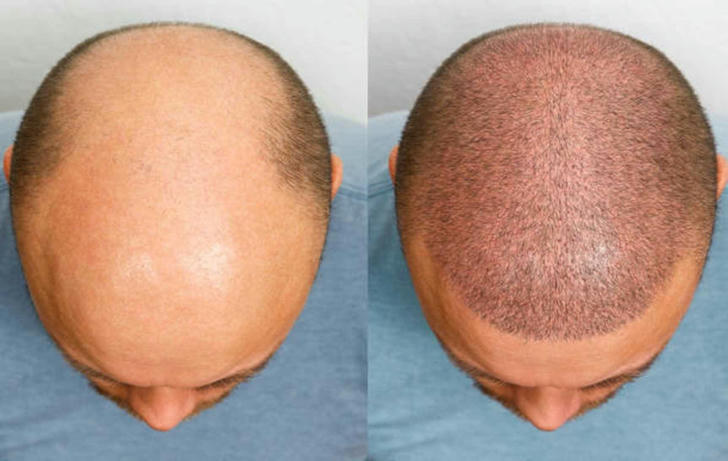How Much Does Hair Transplant Cost?
I. Introduction
Understanding the cost of a hair transplant is essential for anyone considering this procedure. Hair transplants can be a significant financial commitment, and knowing the costs involved helps individuals plan their budgets and make informed decisions. The price of hair transplants varies based on several factors, including the surgeon's experience, the location of the clinic, and the complexity of the case. By being aware of these costs in advance, patients can prepare financially, explore payment options, and choose quality care without unexpected surprises.

II. Factors That Affect the Cost of Hair Transplants
1. Surgeon's Experience and Reputation
•Experienced surgeons with a strong reputation in hair restoration may charge more due to their skills and successful outcomes. Patients often feel more confident investing in a surgeon known for delivering excellent results.
2. Location
•The cost of hair transplants can vary significantly depending on where the clinic is located. In major cities like New York or Los Angeles, prices tend to be higher due to increased demand and living costs compared to smaller towns or rural areas.
3. Complexity of the Procedure
•More complicated cases, such as those involving significant hair loss or the need for a larger number of grafts, will typically cost more than straightforward procedures.
4. Type of Hair Transplant
•There are different techniques for hair transplants, including Follicular Unit Extraction (FUE) and Follicular Unit Transplantation (FUT). FUE tends to be more expensive due to the precision and time involved in extracting individual hair follicles.
5. Number of Grafts Required
•The total cost of a hair transplant often depends on how many grafts are needed. Patients may need anywhere from 1,000 to 4,000 grafts or more, and the price typically increases with the number of grafts.
6. Facility Fees
•This includes the costs associated with the clinic where the surgery takes place. The reputation and quality of the facility can influence the overall price.
7. Anesthesia Fees
•The costs for anesthesia, which is often required during the procedure, should also be factored into the total.
8. Post-Operative Care
•Follow-up appointments, medications, and any necessary supplies after the procedure can add to the overall cost, so patients should consider these expenses as well.
III. Average Cost of Hair Transplants
1. National Average
As of 2024, the average cost of a hair transplant in the U.S. ranges from $4,000 to $15,000. The total cost can vary based on the technique used, the surgeon’s experience, and the complexity of the case.
Here’s a breakdown of typical costs:
•FUT Hair Transplant: $4,000 to $10,000
•FUE Hair Transplant: $6,000 to $15,000
•Robotic Hair Transplant: $8,000 to $20,000
Patients should also consider additional costs like consultation fees and post-operative care when planning their budgets.
2. Cost by Region
New York: $8,000 - $15,000
•High demand and living costs in major cities contribute to increased prices.
Texas: $5,000 - $10,000
•Generally lower living costs make hair transplants more affordable compared to larger cities.
California: $7,000 - $12,000
•High demand for cosmetic procedures in cities like Los Angeles raises the price.
IV. User Examples

User Case 1: Alex’s First Transplant
Alex, a 28-year-old software engineer, had been experiencing hair thinning for several years and decided to pursue a hair transplant. After consulting with a well-respected surgeon, he was quoted $7,500 for an FUE procedure that would address his frontal hairline. Although it was a significant investment, Alex felt reassured by the surgeon’s experience and successful patient stories. After the procedure, he expressed, “It was worth every penny! My confidence has skyrocketed, and I can finally style my hair again.”
User Case 2: David’s Journey to Hair Restoration
David, a 45-year-old businessman, was dealing with significant hair loss and decided it was time to take action. He sought consultation at a clinic that specialized in hair restoration and was quoted $12,000 for a comprehensive FUE transplant covering a large area. David was initially shocked by the price, but after discussing payment plans and financing options with the clinic, he felt more comfortable proceeding. He stated, “I had to think hard about the cost, but now that it’s done, I see it as an investment in my self-esteem. I wish I had done it sooner!”
User Case 3: Maria’s Revision Surgery

Maria, a 35-year-old marketing professional, initially had an FUT hair transplant that did not yield the results she had hoped for. After a year of disappointment, she consulted a different surgeon for a revision. The new surgeon recommended an FUE procedure, which cost her $10,000. Although she was apprehensive about spending more money, Maria wanted to achieve her desired look. After the revision, she shared, “It was a tough decision to spend more, but I’m so happy I did! The results are fantastic, and I feel like myself again.”
V. Hidden Costs and Other Considerations
1. Revision Surgery
•If the initial transplant does not yield the desired results, patients might need additional surgeries, which can significantly increase total costs.
2. Consultation Fees
•Some clinics charge for the initial consultation, and patients should factor this into their budget.
3. Pre-Operative Testing
•Medical tests may be required before the procedure, adding to the total cost.
4. Travel Expenses
•If patients travel to a different city or state for their transplant, they should include costs for travel and accommodation.
VI. Tips for Managing Hair Transplant Costs
1. Get Multiple Consultations
•Meeting with several clinics helps patients compare prices and find the best option for their needs.
2. Choose Certified Surgeons
•It’s important to focus on the surgeon’s qualifications rather than just the price. Opting for a less expensive option might lead to complications that could be costly to fix.
3. Know All Costs Upfront
•Ask for a detailed breakdown of all costs before agreeing to the procedure. This helps avoid unexpected expenses.
VII. Conclusion
Understanding the total cost of a hair transplant is key to making smart decisions. Patients should consider all expenses, including the surgeon’s fee, facility and anesthesia costs, and any hidden charges after the procedure. By comparing prices and focusing on quality care, patients can avoid surprises and achieve the best results. Taking the time to understand the costs and long-term benefits ensures a successful outcome and a worthwhile investment in their appearance.
